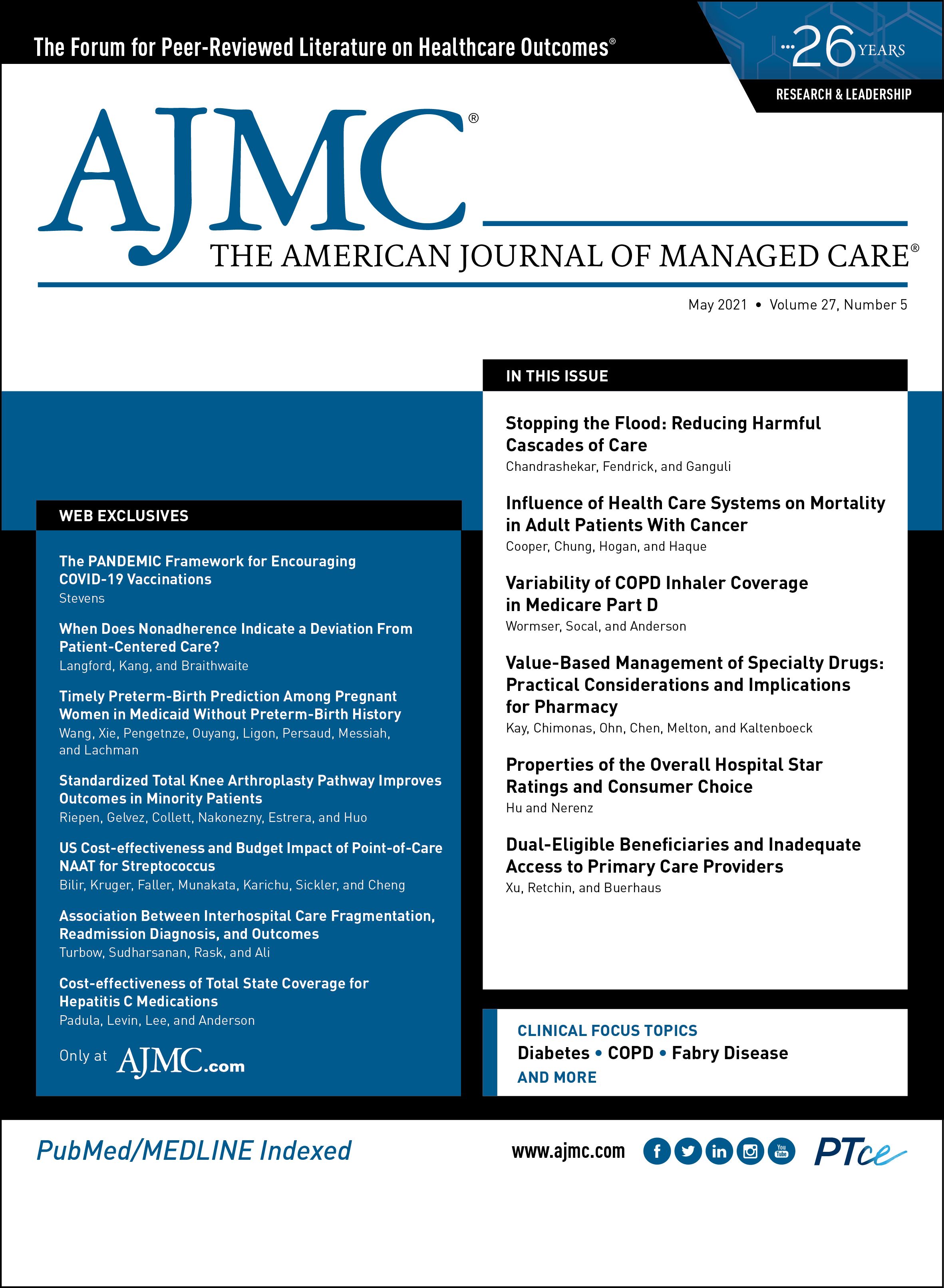- Center on Health Equity & Access
- Clinical
- Health Care Cost
- Health Care Delivery
- Insurance
- Policy
- Technology
- Value-Based Care
Examination of the Quantitative and Temporal Features of COVID-19
COVID-19 infections and deaths vary by the 4 seasons annually and cycle by the day of the week.
Am J Manag Care. 2021;27(12):e404-e405. https://doi.org/10.37765/ajmc.2021.88718
Takeaway Points
COVID-19 infections and deaths vary by the 4 seasons annually and cycle by the day of the week.
- Deaths are greatest on Wednesdays and lowest on Sundays.
- Cases are greatest on Fridays and lowest on Sundays.
- Deaths and cases are greatest and show the greatest variation in middle to late summer and winter, and they are lowest and show the least variation in late spring and late fall.
- Large variations are potentially opportunities for improvement.
Examination of the quantitative and temporal features of COVID-19 infections and deaths through appropriate model fitting provides the benefit of sensitivity analysis in which different values of the independent variables can be applied in a formula to estimate the impact on the outcome variable1 among other sensitivities. The model fitting process identifies the independent variables that are available for sensitivity analysis.
Both COVID-19 infections and deaths can be fit by standard count models that are used for discrete outcomes such as infections. A negative binomial model that adjusts for overdispersion in count models is employed. R2 estimation in count models has been described by Cameron and Trivedi.2 The results are shown in the Figure, in which the upper panels show the x-y plot of observed and fit and the lower panels show observed and fit/estimated over time. The independent variables used to achieve the fits shown for both new cases and deaths are day of the week, week of the year, and the polynomial terms required by the observed pattern type (eg, quadratic, cubic). Day of the week describes the weekly cycle, where new cases are highest on Fridays and lowest on Sundays and deaths are highest on Wednesdays and lowest on Sundays. Week of the year accounts for differences in exposure and transmission during the 4 seasons. The regression output includes the incident rate ratios and their CIs, estimated by week from daily new cases and deaths shown in eAppendix Figure 1 (eAppendix available at ajmc.com), emphasizing the seasonality of both. eAppendix Figure 2 shows a comparison of the reproduction rate (R0) for COVID-19 estimated at the national level using EpiEstim3 and the daily new infection count. When the new infection count is rising, resulting in a positive slope, R0 is greater than 1; when declining, R0 is less than 1. Stata version 17 (StataCorp) was used for regression analyses. The COVID-19 data acquisition method has been previously described.4
Late spring and fall are when the variation in infection and death is lowest; middle to late winter and summer is when variation in bothis greatest, as revealed by the regression model results. The large variations in new cases and new deaths are potentially opportunities for improvement. A convenient rule of thumb is implied by the comparison of R0 and the daily infection count.
Author Affiliation: Independent consultant, Knoxville, TN.
Source of Funding: None.
Author Disclosures: The author reports no relationship or financial interest with any entity that would pose a conflict of interest with the subject matter of this article.
Authorship Information: Concept and design; acquisition of data; analysis and interpretation of data; drafting of the manuscript; critical revision of the manuscript for important intellectual content; statistical analysis; provision of patients or study materials; obtaining funding; administrative, technical, or logistic support; and supervision.
Address Correspondence to: William T. Cecil, MBA, 12807 Long Ridge Rd, Knoxville, TN 37934. Email: bcecil1@chartertn.net.
REFERENCES
1. Thabane L, Mbuagbaw L, Zhang S, et al. A tutorial on sensitivity analyses in clinical trials: the what, why, when and how. BMC Med Res Methodol. 2013;13:92. doi:10.1186/1471-2288-13-92
2. Cameron AC, Trivedi PK. Microeconometrics Using Stata. Stata Press; 2009.
3. Cori A, Ferguson NM, Fraser C, Cauchemez S. A new framework and software to estimate time-varying reproduction numbers during epidemics. Am J Epidemiol. 2013;178(9):1505-1512. doi:10.1093/aje/kwt133
4. Huber C. Import COVID-19 data from Johns Hopkins University. The Stata Blog. March 24, 2020. Accessed April 15, 2021. https://blog.stata.com/2020/03/24/import-covid-19-data-from-johns-hopkins-university/

Trends in Hospital Pricing for Vulnerable Emergency Department Users, 2021-2023
December 4th 2025Self-pay emergency department prices rose significantly from 2021 to 2023, especially at for-profit and system-affiliated hospitals, highlighting growing affordability challenges for uninsured and underinsured patients.
Read More
Integrated Care for Chronic Conditions: A Randomized Care Management Trial
December 3rd 2025The authors sought to understand the differential impact of payer-led community-based care management approaches on stakeholder-oriented outcomes for publicly insured adults with multiple chronic conditions.
Read More

